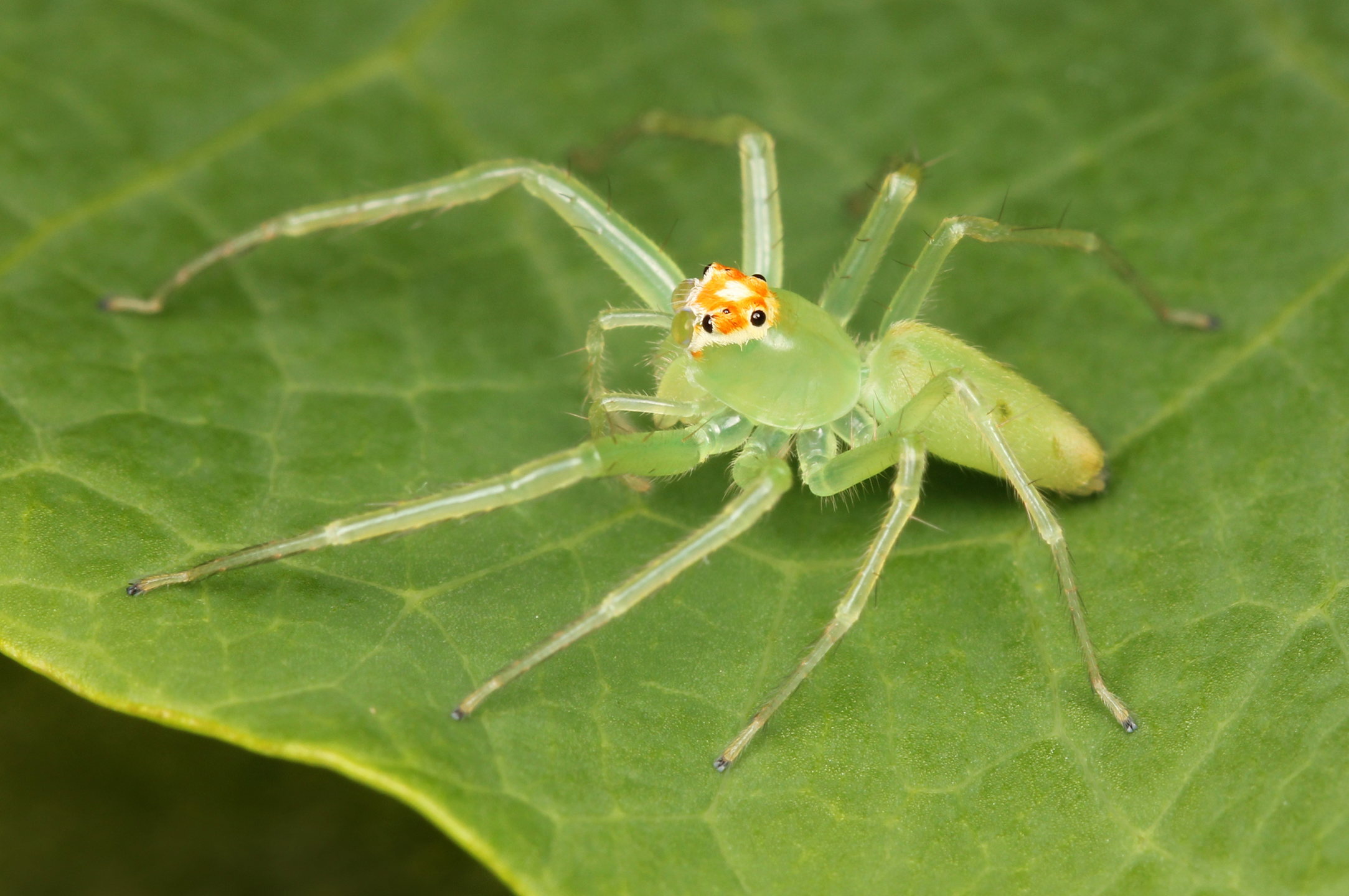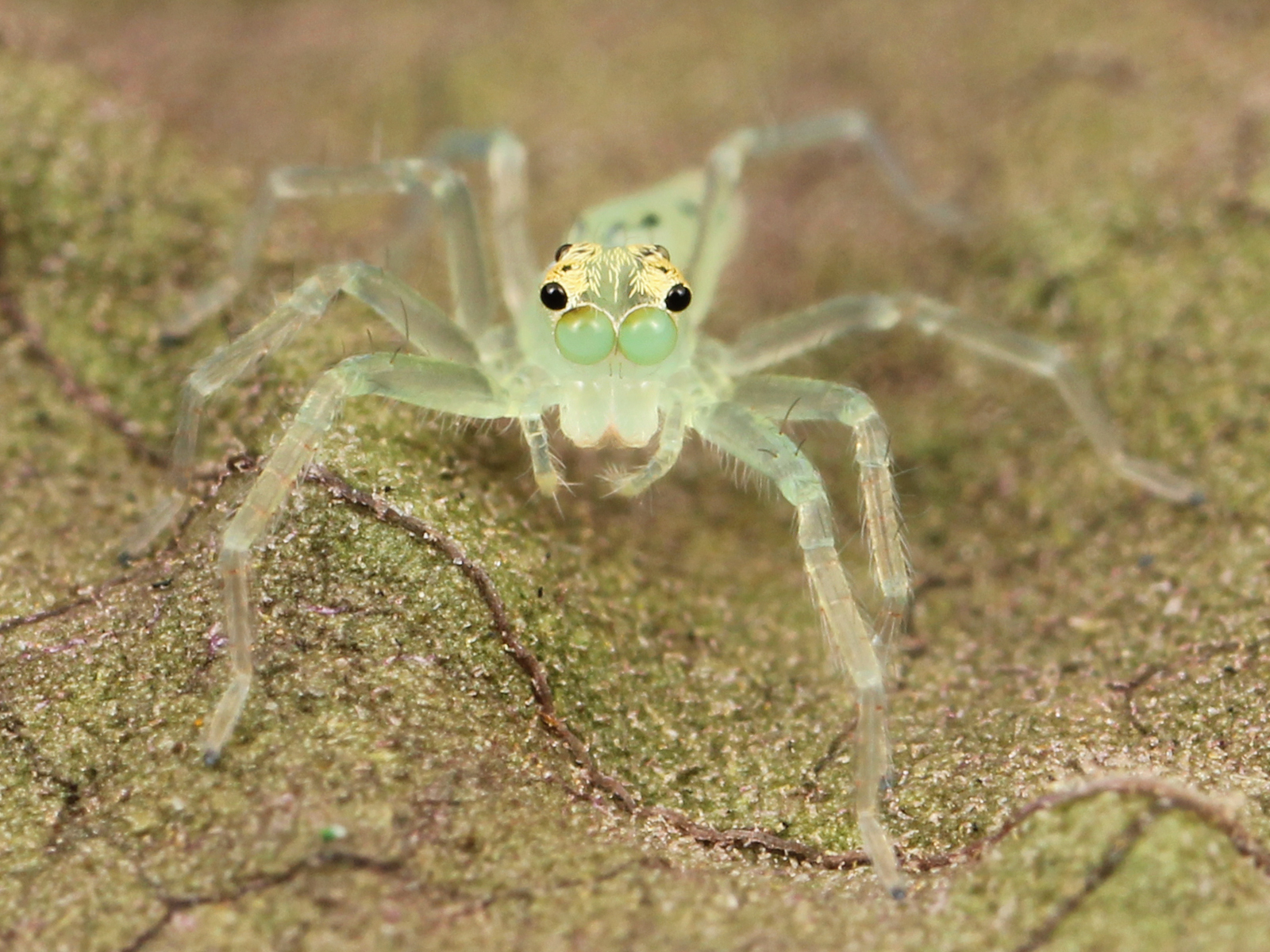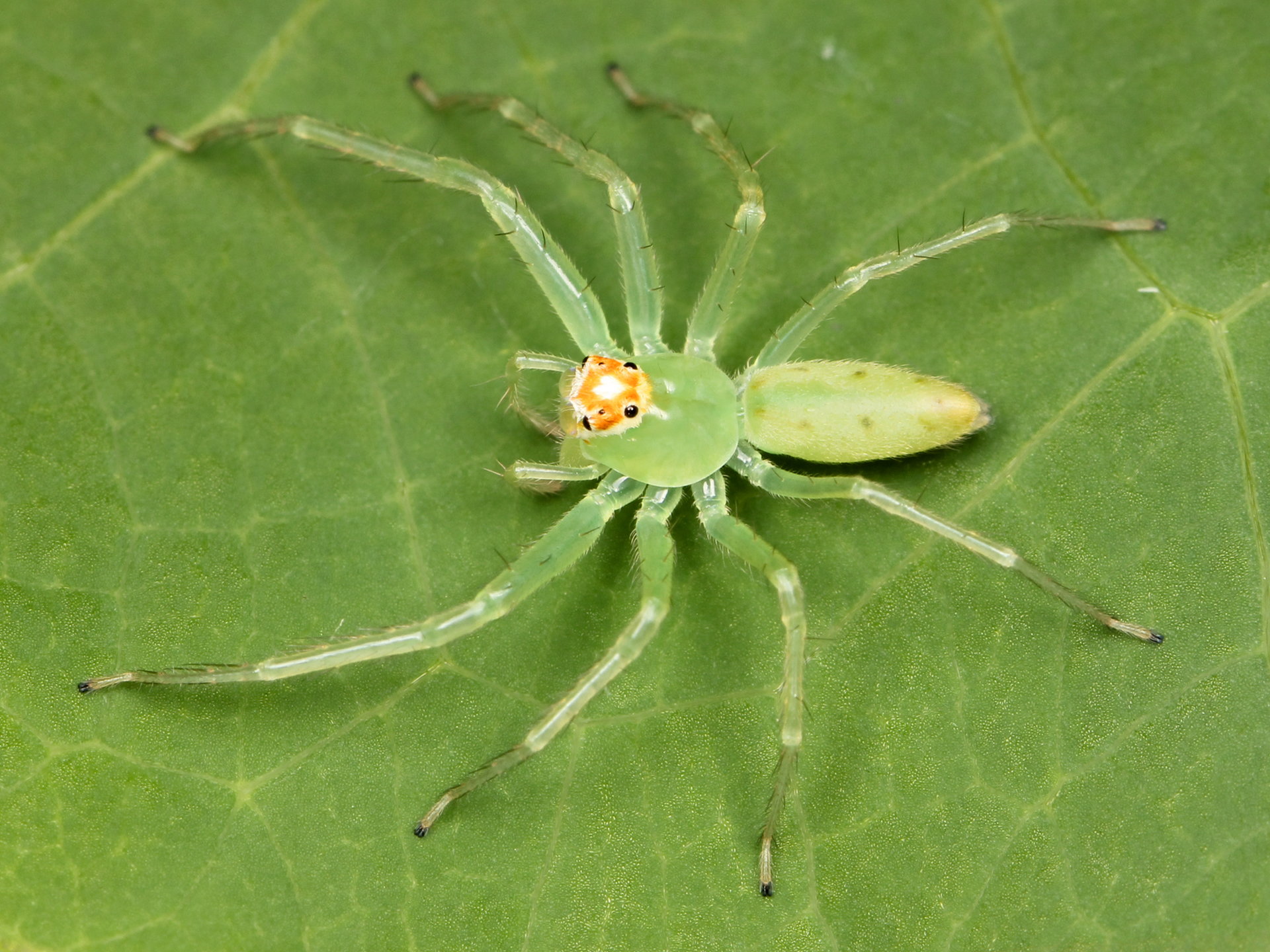Magnolia Green Jumper – Lyssomanes viridis

In Florida and other southeastern states, the Magnolia Green Jumper is one of the most easily recognized of all the jumping spiders. Its vibrant green coloring along with that stupendously orange cap and huge, forward-looking eyes give it an eerily cute appearance. But have no doubt, this little spider is a balls-to-the-wall predator, easily hunting and capturing prey many times its own size.
Jumping spiders are small to medium in size, stout-bodied and short-legged, with a distinctive eye pattern. The body is rather hairy (pubescent) and frequently brightly colored or iridescent. Some species are antlike in appearance. The jumping spiders forage for their prey in the daytime. They approach prey slowly and, when a short distance away, make a sudden leap onto the unfortunate animal. They are good jumpers and can leap many times their own body length.

The AME’s are long and tubular, which helps their resolution (longer focal length, more magnification) but which means they have a narrow field of view. Since the AME’s have a narrow field of view, the spider needs to point them in different directions to see different things. To some extent this is done by moving the carapace, but the eyes can move as well. This is not done by moving the whole ‘eyeball’, since the lenses of the eyes are actually built into the carapace. Instead the retina moves around, while the lens stays fixed. This retinal movement is accomplished by extremely tiny muscles.
A big thanks to Wikimedia Commons Admin Kaldari for the amazing photographs used here.
These images are available under the Creative Commons CC0 1.0 Universal Public Domain Dedication
Spiders Index | Spiders Main | Jumping Spiders | Orb Weavers | Nursery Web
Tree Encyclopedia / North American Insects & Spiders is dedicated to providing family-friendly educational
resources for our friends around the world through large images and macro photographs of flora and fauna.

